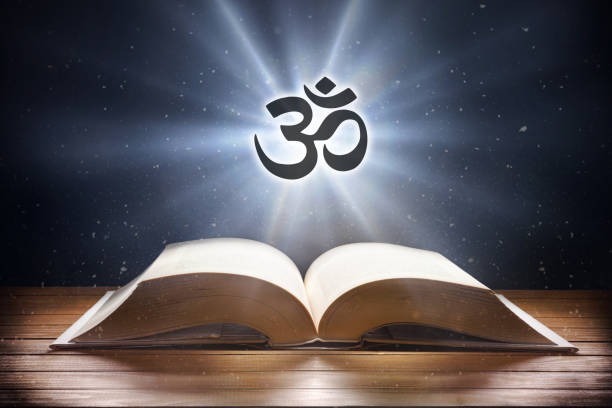The Timeless Scriptures of Sanatan Dharma: A Complete Guide

Sanatan Dharma, often referred to as Hinduism, is the world’s most ancient spiritual tradition, rich with an extensive collection of sacred scriptures. Unlike many religions that rely on a single holy book, Sanatan Dharma offers a vast array of texts that cover philosophy, history, rituals, ethics, and self-realization. These scriptures are broadly classified into Shruti (divinely revealed texts) and Smriti (remembered and compiled by sages).
This blog explores the major scriptures of Sanatan Dharma, their categories, and their significance in guiding humanity toward spiritual enlightenment.
# Shruti (Divinely Revealed Texts - The Primary Scriptures)
Shruti texts are considered the highest authority in Sanatan Dharma, as they are believed to be eternal truths directly perceived by enlightened sages (Rishis). These include the Vedas, Brahmanas, Aranyakas, and Upanishads.
A. The Vedas – The Four Pillars of KnowledgeThe Vedas form the foundation of Hindu philosophy and spirituality. Each Veda contains hymns, rituals, and philosophical teachings.
Rigveda
|
The oldest scripture, composed of hymns in praise of divine forces.
|
Yajurveda
|
A collection of mantras and rituals for yajnas (sacrificial ceremonies).
|
Samaveda
| The source of Indian classical music and chanting.
|
Atharvaveda
| Contains knowledge on healing, protection, and practical life guidance.
|
B. Brahmanas (Ritualistic Commentaries on the Vedas)
These texts explain the meanings and applications of Vedic rituals:
Aitareya Brahmana
|
Rigveda
|
Shatapatha Brahmana
|
Yajurveda
|
Tandya Brahmana
| Samaveda
|
Gopatha Brahmana
| Atharvaveda
|
C. Aranyakas (Forest Treatises)
These texts provide deeper spiritual insights for those who renounced worldly life:
Aitareya Aranyaka
|
Brihadaranyaka
|
Taittiriya Aranyaka
|
D. Upanishads (Vedantic Philosophical Texts) – The Ultimate Wisdom
The Upanishads explore the nature of the self (Atman) and the universe (Brahman), forming the foundation of Vedanta philosophy. Some of the most profound ones include:
- 1. Isha Upanishad
- 2. Kena Upanishad
- 3. Katha Upanishad
- 4. Mundaka Upanishad
- 5. Mandukya Upanishad
- 6. Chandogya Upanishad
- 7. Brihadaranyaka Upanishad
2. Smriti (Remembered Texts ~ Secondary Scriptures)
Smriti texts, while not divinely revealed like Shruti, are revered as guiding scriptures, composed by sages based on eternal principles.
A. Itihasas (Epics) – The Great Historical Narratives
1. Ramayana – Composed by Maharishi Valmiki, narrating the life and teachings of Lord Rama.
2. Mahabharata – Written by Maharishi Vyasa, containing the Bhagavad Gita and the Kurukshetra war.
B. Bhagavad Gita – The Spiritual Guide for All Humanity
Part of the Mahabharata, the Bhagavad Gita is a dialogue between Lord Krishna and Arjuna, providing timeless wisdom on dharma (duty), karma (action), and moksha (liberation).
C. Puranas – The Treasure Trove of Knowledge
The Puranas provide historical narratives, cosmology, ethics, and devotion. They are classified into three categories:
1. Satvik Puranas (Vaishnavite)
Vishnu Purana
Bhagavata Purana (Srimad Bhagavatam)
Narada Purana
Garuda Purana
Padma Purana
Varaha Purana
2. Rajasik Puranas (Brahma-related)
Brahma Purana
Brahmanda Purana
Brahmavaivarta Purana
Markandeya Purana
Bhavishya Purana
3. Tamasik Puranas (Shaivite)
Shiva Purana
Linga Purana
Skanda Purana
Agni Purana
Matsya Purana
Kurma Purana
Vamana Purana
D. Dharma Shastras – The Laws of Righteous Living
These scriptures provide ethical, legal, and social guidelines for individuals and society.
Manusmriti
Yajnavalkya Smriti
Parashara Smriti
Narada Smriti
3. Agamas and Tantras – Sacred Ritualistic Texts
These scriptures form the foundation of temple worship, meditation, and tantric practices.
Shaiva Agamas – Texts of Shaivism.
Vaishnava Agamas (Pancharatra & Vaikhanasa) – Texts of Vaishnavism.
Shakta Agamas (Tantras) – Texts dedicated to the worship of Devi.
4. Darshanas – The Six Schools of Hindu Philosophy
The Darshanas are philosophical texts that explore different aspects of reality, logic, and self-realization.
1. Nyaya – Logic and reasoning (by Gautama).
2. Vaisheshika – Metaphysics and atomic theory (by Kanada).
3. Sankhya – The interplay of Purusha (spirit) and Prakriti (matter) (by Kapila).
4. Yoga – The science of mental discipline and meditation (by Patanjali).
5. Purva Mimamsa – The philosophy of Vedic rituals (by Jaimini).
6. Vedanta (Uttara Mimamsa) – The knowledge of Brahman and ultimate liberation (by Vyasa).
5. Stotras – Devotional Hymns
Sanatan Dharma has a vast collection of devotional hymns dedicated to various deities, including:
Vishnu Sahasranama – 1,000 names of Vishnu.
Lalita Sahasranama – 1,000 names of Goddess Lalita.
Rudram-Chamakam – Sacred hymns dedicated to Lord Shiva.
Aditya Hridayam – A powerful prayer to the Sun God.
# Conclusion
The scriptures of Sanatan Dharma form an unparalleled repository of wisdom that guides individuals toward spiritual growth, ethical living, and self-realization. These sacred texts cover all aspects of human life, offering insights into philosophy, devotion, rituals, and the path to liberation (Moksha).
By studying and applying the teachings of these scriptures, one can live a life of righteousness (Dharma), self-awareness, and ultimate fulfillment.
Fri Mar 21, 2025
